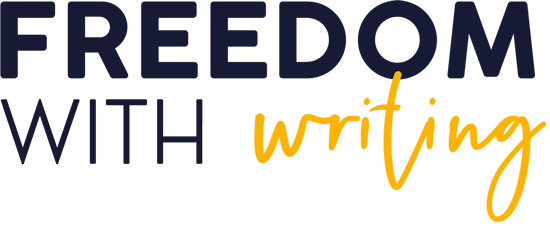Dear Writers,
Here are 25 magazines and websites that pay for writing about conservation and the environment.
We’ve researched payment information and linked to contact information for each of the publishers in this list. Keep in mind that payment rates are not fixed, and may need to be negotiated.
— Jacob Jans
The Revelator is “an online news and ideas initiative of the Center for Biological Diversity.” They cover climate change, endangered species, wildlife, conservation, pollution, and more. For about 1,000 words, they pay $300 to first-time contributors and $350 to returning contributors; they publish one freelance article per week at this rate. They also publish one slightly more involved story per month, for which they pay up to $500. Details here.
The Earth Island Journal is a quarterly magazine that discusses the environment and how it relates to present-day issues. They pay 25 cents per word. According to their guidelines, an in-depth feature of 4,000 words pays $750 to $1000. To learn more, make sure to read their full submission guidelines.
Hakai Magazine explores science and society in coastal ecosystems.” They accept queries for feature articles. When they first launched, their guidelines said they pay $1/word. Pay is not listed on the guidelines anymore, but should still be quite competitive. Features range from 1,000 to 3,000 words. Shorter articles are around 350 words. To learn more, read their submission guidelines.
Ensia is a solutions-focused media outlet that publishes stories that encourage and inspire people to create a more sustainable future. They consider proposals for articles and feature stories that “provide solution-focused perspectives on emerging environmental challenges as well as novel ways of looking at long-standing issues.” Their articles are of about 700 to 750 words, and feature stories are of about 1,000 to 1,200 words. According to one payment report, they paid $0.80 per word. For details, read their contributor guidelines.
Wild Lot Press is a publisher and residency program that focuses on “the curious gray areas between the natural world and civilization, and the influence of the wild on people, characters, and the creative process.” They are looking for pitches for essays, photo essays, book reviews, and interviews. They pay up to $250 for essays. They pay $150 for photo essays, $50 for book reviews, and $50 for interviews. To learn more, visit this page.
Inhabitat is a green design and lifestyle website that covers environmental news and sustainable design. They are looking for remote writers who can contribute 2 or more articles per week. They pay $20 for a 300-word news story, $30 for a 300-word gallery story, and $50 for an 800-word feature story. They may also pay traffic bonuses of $150 to $300 per story. Details here.
Inkcap Journal is a publication focused on nature and conservation in Britain (England, Wales, and Scotland). They publish a small number of stories contributed by journalists and writers. They look for reported features, interviews, and essays about the environment in Britain. They generally pay £100 to £300 per story. If interested, send your pitches to editor@inkcap.co.uk. For more information, refer to their pitch guide.
The Narwhal is a non-profit magazine that publishes stories about Canada’s natural world. They welcome pitches for stories of up to 2,000 words. They especially welcome pitches from BIPOC writers. Their reporting is “primarily focused on the extractive industries — mining, forestry, fishing and oil and gas extraction — and large-scale conservation.” Their rates start at $0.50 per word. Writers should send their pitches to editor@thenarwhal.ca. For more information, refer to this page.
Scuba Diving Magazine is a publication that delivers cutting-edge scuba diving gear, travel, and training information. They are always accepting digital pitches. The stories that they publish generally fall into these categories: travel, news, animal encounters, training, gear, and conservation. According to their editor, their digital rate starts at $0.25 per word. If interested, send your pitches to edit@padi.com. For more pitching information, refer to this page.
Tail Fly Fishing Magazine is a bimonthly print publication that is devoted exclusively to fly fishing in saltwater. They are always seeking great content on saltwater fly fishing (with focus on conservation and the environment). They want feature articles of 2,000 to 2,500 words, and short features of 1,000 to 1,500 words. They pay more for well-polished articles with great photos. They pay up to $500 for features, $300 for short features, $200 for “fly tying/ step-by-step”, $150 for “inside the box”, $200 for “an angler opines”, and $600 for photo essays. To learn more, read their submission guidelines.
BirdWatcher’s Digest features non-technical articles about travel for bird lovers, identifying birds, natural history, and bird conservation. The magazine was established in 1978, is bi-monthly, and is available on newsstands and by subscribing. They have multiple sections for submissions that include The Well-Equipped Birder, Far Afield, Species Profile, The Backyard, and feature articles. Their word counts differ. Although they do not specify payment amounts, they do state that they pay after publication. Read their submission guidelines here: https://www.birdwatchersdigest.com/bwdsite/about/about-our-company/submissions/writers.php
Kayak Angler is a quarterly magazine. Its content covers “the intersection of fishing and paddlesports,” and its scope includes North America and regional fisheries (the Pacific, the Atlantic, and the Gulf). Editors look for articles on “the latest news in conservation and fishing tackle, and accounts of incredible catches or pioneering trips.” These well-written articles must be accompanied by quality photos and contain practical advice and take-away value for readers. Payment is $0.20 per word for features (1,000-1,500 words) and departments (400-600 words).To learn more, read writers’ guidelines.
Turkey Country is the member’s magazine for the National Wild Turkey Federation. They are devoted all things related to hunting wild turkeys, including conservation, firearms, and outdoor activities. They pay an average of $450 for feature articles, and $350 for department articles. To learn more, read their submission guidelines.
REPTILES is a bi-monthly magazine aimed at all levels of reptile and amphibian enthusiasts. Editors look only for original articles on care and husbandry of the animals in captivity, animals’ health, and conservation efforts made of behalf of reptiles around the world. Payment is $300 for a 2,000-2,500-word article with photos. To learn more, read the submissions guidelines: http://www.reptilesmagazine.com/Submit-A-Picture-or-Story-to-Reptile-Magazine/Writers-Guidelines/
National Parks is an award-winning, quarterly magazine known for high-quality photography and writing. The magazine is published by the National Parks Conservation Association (NPCA), a non-profit group dedicated to the protection and enhancement of the National Park System. Reports indicate they pay $1 per word. To learn more, read their submission guidelines. Be sure to click “Downloads” on their guidelines page to access the file.
Northern Woodlands is a quarterly magazine publishing articles that aim at conservation-minded people. Topics include all aspects of the Northeast’s forests: wildlife species, woodworking, natural landscapes, and woodlot management. It is not a trade magazine for the forest products or an environmental advocacy publication. “We like to surprise our readers with stories they won’t find anywhere else,” declare editors in their guidelines. Payment is $0.10 per word for writers new to the magazine (payment may increase for established/experienced writers). Feature articles are 1,000-3,000 words. To learn more, read the submissions guidelines: https://northernwoodlands.org/issues/writers-photographers
Outdoor Canada is Canada’s leading magazine for fishing, hunting, and conservation. They cover “what’s happening in the Canadian outdoors from coast to coast to coast.” They pay $400 and up for features. To learn more, read their submission guidelines.
South Carolina Wildlife is a bi-monthly magazine published by South Carolina Department of Natural Resources. Editors look for articles on conservation of natural resources and wild life, outdoor activities, and other “subjects on a national level of interest to outdoor-oriented readers anywhere.” Editors buy the First North America serial rights. Payment is $0.20 per word for 500-2,000-word articles. To learn more, read the submissions guidelines: http://www.scwildlife.com/writersphotographers.html
Conservationist is a bimonthly non-profit magazine published by the New York State Department of Environmental Conservation (NYSDEC). Its content includes fishing and hunting, outdoor recreation, nature observation and natural history. Although Conservationist is not a scientific journal and aimed at a lay audience, its readers expect information to be scientifically accurate. Editors do not consider submissions that do not follow their guidelines. Conservationist retains all rights to published material. Payment is $100 for 1,500- 2,000-word articles and $50 for articles of fewer than 1,500 words. To learn more, read writers’ guidelines: http://www.dec.ny.gov/pubs/24061.html.
Wildlife in North Carolina is a print magazine that features the natural beauty of North Carolina. They publish articles about outdoor recreation, hunting/fishing, natural histories, and environmental/conservation issues. They pay $400+ for feature articles. To learn more, read their submission guidelines.
Coastal Review Online is a daily online publication published by the N.C. Coastal Federation. It covers environmental and conservation events and issues along the N.C. coast, the history and culture of the coast, “green” travel stories, and profiles of noteworthy people. Editors buy first-time serial rights (including the right to publish the material on the CRO website and archive the material indefinitely on the site). Payment is $75-$200 for 800-2,000-word articles. To learn more, read the submissions guidelines: https://www.coastalreview.org/about/submissions/write-cro/
Minnesota Conservation Volunteer is the magazine of Minnesota Department of Natural Resources. They want features and essays on the state’s natural resources and outdoor recreation. They like anecdotes and quotes used liberally. They pay $0.50/word for features and essays, $50-100 for online rights to features, essays and reprints. Details here.
Outdoor Oklahoma is a magazine of the Oklahoma Department of Wildlife Conservation. They occasionally buy freelance articles, and accept reprints. Word count: Above 1,500 for features, 500-1,500 for shorter articles. Pay: $300-450 for features, $125-250 for shorter articles, $75 for sidebars and “Off the Beaten Path” articles. Details here.
Bugle Magazine is the magazine of the Rocky Mountain Elk Foundation. They accept submissions in a variety of categories, including conservation, natural history, wildlife management, hunting, human interest, and “women in the outdoors, ” which are personal essays or stories about elk/hunting/etc. They pay 30 cents per word, up to 4,500 words. To learn more, visit their website here.

